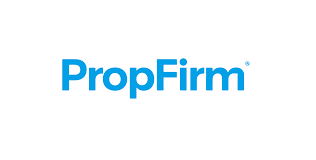Prop Firms, A New Solution to Capital Deprivation?
We are now in a world where the need for leverage, especially financial leverage hasn’t been greater, and for traders’ financial leverage at a time will just mean other people’s money but since the uncertainty around the markets ever increases, the sorting for capital through investors narrows and is difficult.
Prop-firms have since then risen as they have found a way to provide the capital a trader needs and very well simulate the trader-investor relationship as profit sharing is seemingly in favor of the trader, I have a lot to uncover in this article which will follow this order.
- What purpose do they serve?
- Origin of prop-firms
- First prop-firm
- Structure of prop-firms
- Challenge of Challenge phases
- Adjustment by Prop-Firms
- Prop-firm capital vs investor capital
- Have prop-firms come to stay
- Failed prop-firms
- Thriving prop-firms
- Can prop firms be a reasonable start for a trader with no capital
- Psychology of Ground Zero
- My two cents
I will be taking two topics today which are:
- What Purpose do they serve?
- Structure of Prop Firms

Google defines a prop firm as an entity that provides traders with the opportunity to trade in the financial market with a significant amount of capital provided by the firm. In a general sense, these firms aim to profit from the traders’ expertise and successful trading strategies in exchange for the capital and resources given to the trader.
By definition alone, it is easy for the layman to see a win-win business proposition as a trader will be given access to an enormous amount of money and have the opportunity to profit from that capital, yes, it is a great gesture but doesn’t come without its baggage! Let’s take a look into some of the purposes prop firms serve in the trading world.
What purpose do they serve?
Prop-firms serve numerous purposes as their presence in the financial industry grows but I want to talk about a few very significant, obvious purposes they have been serving thus far.
Capital provider:
There is no doubt that prop-firms provide traders with large capital allocation that they otherwise wouldn’t be in charge of if they were trading personal capital and this has afforded traders the ability to trade larger positions than they would be able to with their funds, and this has been a great result to traders achieving high returns in the market.
Discipline as risk management:
Prop-firms have strict risk management rules that monitor and control traders’ exposure to market risks, even before a trader is given a real account to trade prop-firms have a system that guarantees a trader’s expertise and when this trader is approved, they still have strict systems in place that keeps the trader in check and this has helped a lot of traders to gauge and keep discipline, how they risk in the market.
Market Liquidity:
There is no doubt that the presence of prop firms has impacted positively on the liquidity of the market as their contribution to allocate capital to the average trader has seen a rise in the participation of traders in the financial market and reduced the barrier of entry, they also have been participating actively in trading activities, providing buy and sell orders that help facilitate efficient market functioning.
Education:
A lot of prop firms provide education and training programs, they mentor and help traders develop their trading skills and strategies in the form of seminars, tutorials, trading courses, and access to experienced traders who offer guidance to beginners and intermediate traders.
It is safe to say the prop firm industry is serving a great purpose in the financial market and their need is justified. For more context let’s take a deep dive at the first-ever prop-firm that surfaced in the financial market.
First Prop-Firm
To pinpoint the first ever prop-firm that emerged is quite challenging as many firms in the past had complex business models that be confusing as to whether to place them under prop-firms or just brokerage firms, however the origin of prop-firms can be traced back to the year 1969 which is when a company called “Refco Inc” was founded and they were initially focused on futures trading before they expanded into forex trading and became one of the leading forex brokers and liquidity providers in the industry.
Although Refco was a brokerage firm, it also engaged in proprietary trading activities using its capital. But if I must talk about the modern-day prop-firm industry and their start I will do so with the founding of a firm called FTMO.
FTMO which was initially called “ziskejucet.cz was conceived in 2014 in a small Prague office where a group of young traders joined forces and contributed to different types of trading systems and different types of money and risk management. To cut a long story short FTMO in 2017 launched internationally and began the spread of what is popularly known as the modern type of prop firm today.
Yes, it all started with FTMO, what we have come to know as the prop-firm today was pioneered by FTMO, they are the industry’s leading company, and they set the pace and opened the door for hundreds of firms seen today.
FTMO has been operating since 2017 internationally and has been providing capital to folds of traders worldwide with a proven track record of pay-outs of over 29million dollars as of 2021, it is no doubt that the firm is a giant in the industry as they are still a major player after 7years since launch, which has proven that they have a solid business model, especially with the economic landscape which has had millions of businesses fold up in the past.
Let’s move on to how exactly prop-firms are structured and how the business model works for both the firm and the traders.
Structure of Prop-Firms
The structure of prop firms varies but they generally share common characteristics and components which will be my main focus for this discussion. The commonality amongst prop firms is as follows.
Ownership and Management
Prop-firms are usually privately owned and the demography of the owners usually falls in age brackets 25 to 40 years of age, it is a young man’s business although they may have investors or shareholders who are way older, the management and operation of the day to day is overseen by young people of the Gen-Z and the millennial generation who comprise of the founders, partners and senior executives who are in charge of the strategic direction and key business decision of the company.
In essence, what I am trying to say here is that this business is commonly done by young people which has been a great cause of concern and speculation in the industry as to the sustainability and possibility of actually thriving. This will be discussed in other parts of this article shortly.
Risk Management
Risk management is an important function of the prop-firm structure as they monitor and control trading risks effectively. Risk managers and analysts assess the firm’s overall risk exposure, set risk limits, monitor trading activity in real-time, know which traders to allocate certain trading decisions to, and implement risk mitigation strategies to protect firms’ capital and profitability. The firm decides based on carefully watching certain traders’ trading styles and performances and knowing who to back with real money.
Mode of Entry:
Every prop firm charges a certain fee to purchase specific account sizes which are first given to traders initially as a demo account till traders prove their worth and graduate to real funds where the trader gets paid a certain percentage of the profit made at agreed times of payment. The fee prop firms charge is generally known as the challenge fee which is a commitment a trader who wants access to a specific trading account must risk and this is how prop firms essentially make their money at first.
I want to now take you on a ride on how the prop-firm industry has impacted traders, whether positively or negatively is left to your perspective and ability to comprehend.
Challenge of Challenge Phases
If you remember I mentioned earlier that prop-firms require entry and this comes in the form of phases where traders are given certain rules which cannot be broken, and these rules are set to ensure that any trader trading the prop-firms’ capital is a good enough trader. However, there has been speculation about the relevance of these rules and how they impact the psychology of the traders.
At first pro-firm industry had common rules like Time limits, phase 1 and phase 2 which had certain percentages required to pass, draw-down limits both daily and overall, and profit targets which stood as qualification for traders who wanted to join the list of funded traders in the industry. These rules have been said by many to be quite unnecessary and not a good judge of what a great trader is, these rules have been said by many to affect traders in the following ways.

The challenge of the Time Limits:
Many traders have brought up the concern that even for experienced traders there are bad days, weeks, and months whereby they under-perform in the market resulting in losing money, and if these prop-firms keep putting time limits on their challenge requirements, it won’t be a positive impact on traders who even with their years of experience are prone to bad months, hence this sort of rule can make traders over risk to pass the phase on time and this in most cases will result in violation of a draw-down rule if a loss is acquired.
These made the Traders Question the intentions of prop firms as there were doubts as to how they make their money whether it is through the success of traders who trade well and share profits with the company, or it is through the failure of traders who do not pass the challenges and their challenge fee gone to the prop-firms.

Challenge of Profit Target:
The prop-firm industry is known for setting certain thresholds profit-wise as a requirement of success to traders pursuing the prop route, and these thresholds are in percentage of the overall capital that a trader is to hit if he or she wants to move to the next phase, this raised a lot of eyebrows as traders share the concern that percentage returns are relative on a month by month basis, as a month can be seen with certain percentage generated and the next can under-perform the previous month. Especially when a certain time limit is set to make that percentage, it becomes difficult for traders to perform at such a level.
This particular challenge has seen a lot of traders fail to make those percentages within the required time limit resulting in some cases of failure or others having to restart the challenge which can be very frustrating. To put into context, a comparison has been made between prop firms and personal capital in the sense that, firms expect you to make feats of for example, 10 percent in the first month to be approved as a real trader whereas if you were trading your capital, even if you don’t make that much monthly you are not considered a bad trader, this sprouted a lot of challenges for the average trader pursuing the prop route.

Challenge of Draw-down Limit:
Prop-firms have a drawdown breach limit which a trader must stay above to be eligible for continuation these limits are factored on a daily and overall basis whereby a trader must not breach a certain percentage of the equity in a day or ever.
This has brought certain challenges because traders believe it causes a tight strain and no room to breathe, some trading systems don’t have fancy win rates and when these systems test the prop-firm way they flop but they do well with personal capital, so traders talk about how prop-firms put them in a tight spot where they can’t trade their usual strategy and have to be another type of trader to fit the requirement of the prop-firm challenges, hence causing failure.
These are some of the concerns communicated by traders about the Prop-firm industry which questions the relevance of the industry and how they help traders. Based on these concerns some prop firms have decided to adjust and some forming a unique selling point around this challenge and issue traders have with leading firms.
Adjustment by Prop-Firms
Based on the complains of traders about the constrain the rules of prop-firm challenges impose on traders, some prop-firms have actually decided to change the rules and mirror personal account type, examples of these are:
No more Time Limits:
A lot of prop-firms have adjusted their challenge phases to not impose time limits on traders and this has seen a rise in optimism towards the industry, a lot of prop-firms use the term “No Time Limit” as a unique selling point to attract traders to their companies and this made competition for customers rise in the industry, the leading firms, however, took some time to come to terms with this “no time limit” decision as it will affect the business model and some even say it affects greatly their profitability as there are questions on a lot of these firms profiting off the failure of challenge phases. Needless to say, this became a trend and every prop firm new or old started incorporating this feature to stay competitive.
Decrease In Profit Target:
This also has been a necessary adjustment a lot of prop-firms have made to stay in good favor of the majority of traders, although this is a big change for industry giants they also have implemented this change in a way whereby they have different types of challenges as options to choose from for example, if you want a reduced profit target you will have to pay more and also follow certain requirements to secure it, in essence, this adjustment was made by almost all prop-firms both old and new prop-firms.
Increase In Draw-down Limit:
Although this is not a common adjustment made by most prop firms there is no doubt that a lot use it as a unique selling point and an advantage to compete in the industry, increase in draw-down limit gives room for mistakes and this has seen more traders passing challenges and ultimately becoming funded traders.
There are a lot more adjustments made by prop firms to proffer solutions to the restrictions that had once existed, each prop firm adjusts according to their presence, market share, and confidence in the market, Afterall every prop-firm company is geared toward making profits as they are not charity organizations.
That will be all for now, Next time we meet I will discuss about Prop Firm capital versus Investor capital, till then, Be Safe!


